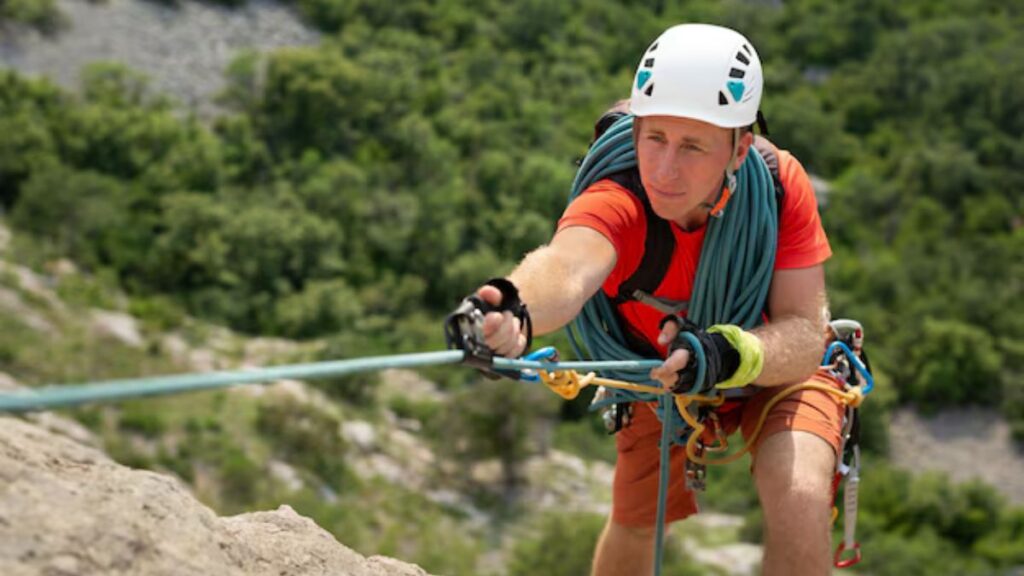Imagine scaling a vertical rock face, the wind whipping past you as you reach for the next handhold with nothing but your own strength to keep you secure. This exhilarating form of climbing, known as Ropeless Climbs Crossword Clue, captures the essence of adventure and pushes the limits of human capability. With no safety net in sight, climbers must rely on their skills and instincts to conquer heights that most would only dream about. As more enthusiasts are drawn to this daring approach, questions arise: What drives climbers to embrace such risk? And how has ropeless climbing evolved into a recognized discipline within the climbing community? Join us as we delve deeper into this thrilling world where every ascent is both a test of courage and artistry.
The history and evolution of ropeless climbing
Ropeless Climbs Crossword Clue, often referred to as “free soloing,” traces its roots back to the early days of rock climbing. Pioneers like George Mallory and later, climbers in the mid-20th century, began experimenting with techniques that challenged traditional safety practices.
As gear evolved, so did the mindset of many climbers. The thrill of ascending without protection grew alluring. Climbers sought not just physical challenge but also a profound connection with nature.
The iconic ascent of El Capitan by Alex Honnold in 2017 marked a pivotal moment for ropeless climbing. His seamless climb captured global attention and showcased unprecedented skill.
This discipline continues to attract adventurous spirits today. Each new generation refines techniques while pushing boundaries further than ever imagined. Ropeless climbing remains at the intersection of art and athleticism—constantly evolving yet deeply rooted in tradition.
Safety concerns and precautions for ropeless climbing
Ropeless climbing, while exhilarating, poses significant safety risks. Without a harness or rope, a single misstep can lead to serious injuries or worse.
Climbers should always assess the rock quality and route difficulty before attempting any climb. Loose holds and unstable surfaces can quickly turn an adventure into a dangerous situation.
Proper gear is essential even without ropes. Climbing shoes with excellent grip are non-negotiable for maintaining footholds.
Also, consider your surroundings. Weather conditions play a crucial role in safety; wet or icy rocks can be treacherous.
Finding partners who share similar skill levels helps mitigate risk during climbs. Communication is key—discuss routes and techniques beforehand.
Practice falls in controlled environments to build confidence and technique when tackling higher walls solo. Understanding body mechanics will improve agility on tricky routes while keeping potential hazards at bay.
Benefits and challenges of ropeless climbing
Ropeless climbing, or free soloing, offers climbers a thrilling experience. The freedom of movement is unparalleled. Without a rope, you can climb with agility and grace.
The sense of accomplishment is immense. Reaching the top without safety gear can be exhilarating. It pushes physical limits while demanding unwavering focus.
However, this style comes with significant challenges. The risk factor skyrockets when there’s no rope to catch a fall. Even minor slips can lead to serious injuries or worse.
Mental strength plays a crucial role in ropeless climbs. Climbers must maintain composure under pressure and conquer fear head-on. Training becomes essential not just for technique but also for building confidence.
Weather conditions add another layer of complexity. Sudden changes can make routes more dangerous quickly. Understanding your environment is vital for safe ascents even without ropes attached.
Tips for beginners on how to start ropeless climbing
Starting Ropeless Climbs Crossword Clue can feel intimidating, but with the right approach, it becomes an exhilarating journey. Begin by choosing manageable routes that match your skill level. Start small to build confidence and technique.
Invest in quality climbing shoes for better grip and comfort. These will enhance your ability to navigate tricky holds without added stress.
Practice footwork diligently; good foot placements make all the difference in maintaining balance and control while climbing.
Consider finding a mentor or joining a local climbing community. Learning from experienced climbers can provide valuable insights into techniques and safety practices unique to ropeless climbs.
Always focus on body positioning—keeping your center of gravity low helps prevent falls. Film yourself during practice sessions; reviewing footage aids improvement by highlighting areas needing adjustment!
Famous climbers who have attempted or mastered ropeless climbs
Among the pioneers of ropeless climbing, Alex Honnold stands out. His iconic free solo ascent of El Capitan in Yosemite is a landmark moment in climbing history. Honnold’s meticulous preparation and mental fortitude have redefined what’s possible without ropes.
Another noteworthy climber is Tommy Caldwell, known for his bold traverses and daring climbs. Caldwell has pushed the boundaries by tackling difficult routes with minimal safety gear, proving that skill can sometimes outweigh reliance on equipment.
Free climbers like Cedar Wright also deserve recognition. His adventurous spirit led him to tackle epic routes without any protection, showcasing both talent and nerve.
These athletes inspire a new generation of climbers drawn to the allure of ascending rock faces unencumbered by gear. Their achievements spark fascination and debate within the climbing community about risk versus reward in this extreme sport.
Conclusion: Is ropeless climbing the future of rock climbing?
The rise of Ropeless Climbs Crossword Clue has sparked debates within the climbing community. As more climbers push their limits, the allure of ascending without a safety net is undeniable. This style tests not just physical strength but also mental resilience. It challenges traditional safety norms and redefines what it means to be an adventurous climber.
As techniques improve and gear evolves, some see ropeless climbing as the next frontier for thrill-seekers. Others caution against its risks, emphasizing that safety should never be compromised in pursuit of adrenaline.
Ropeless climbs may become increasingly popular among experienced climbers seeking new heights—literally and figuratively. Whether this trend will dominate the future of rock climbing remains uncertain, but one thing is clear: it adds a fascinating layer to an already diverse sport. The balance between risk and reward continues to intrigue both participants and spectators alike, ensuring that ropeless climbs will remain a topic of discussion for years to come.



